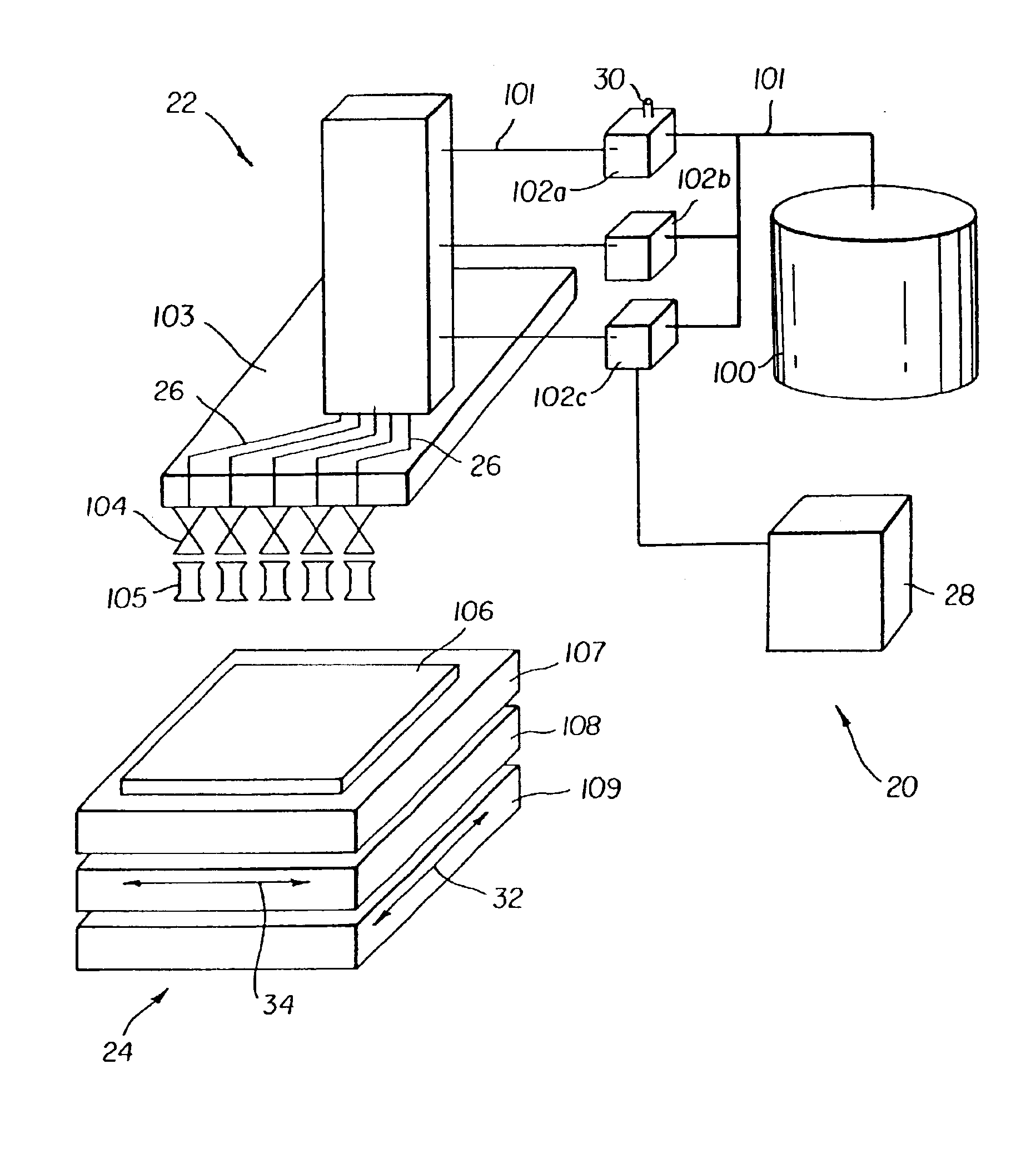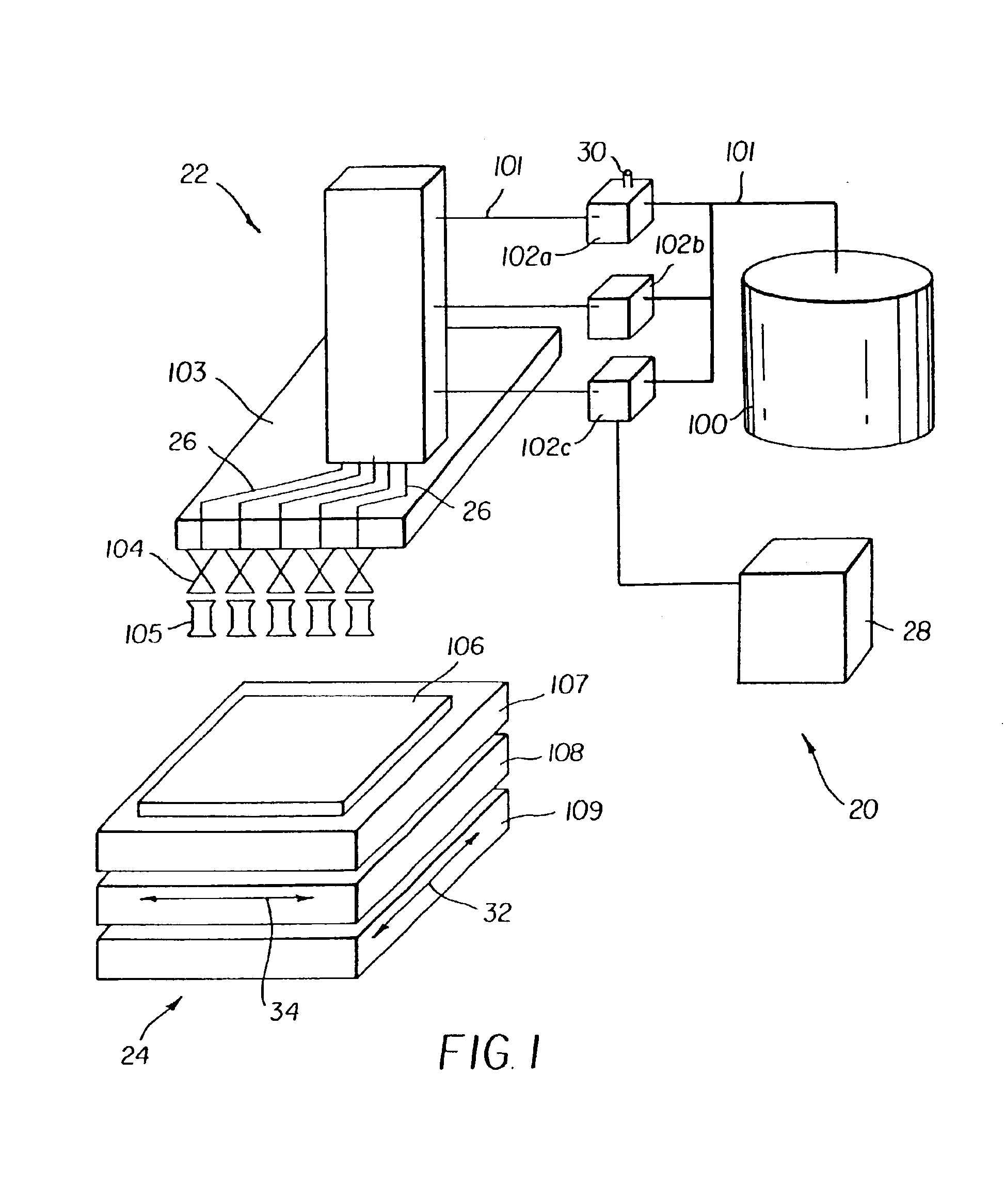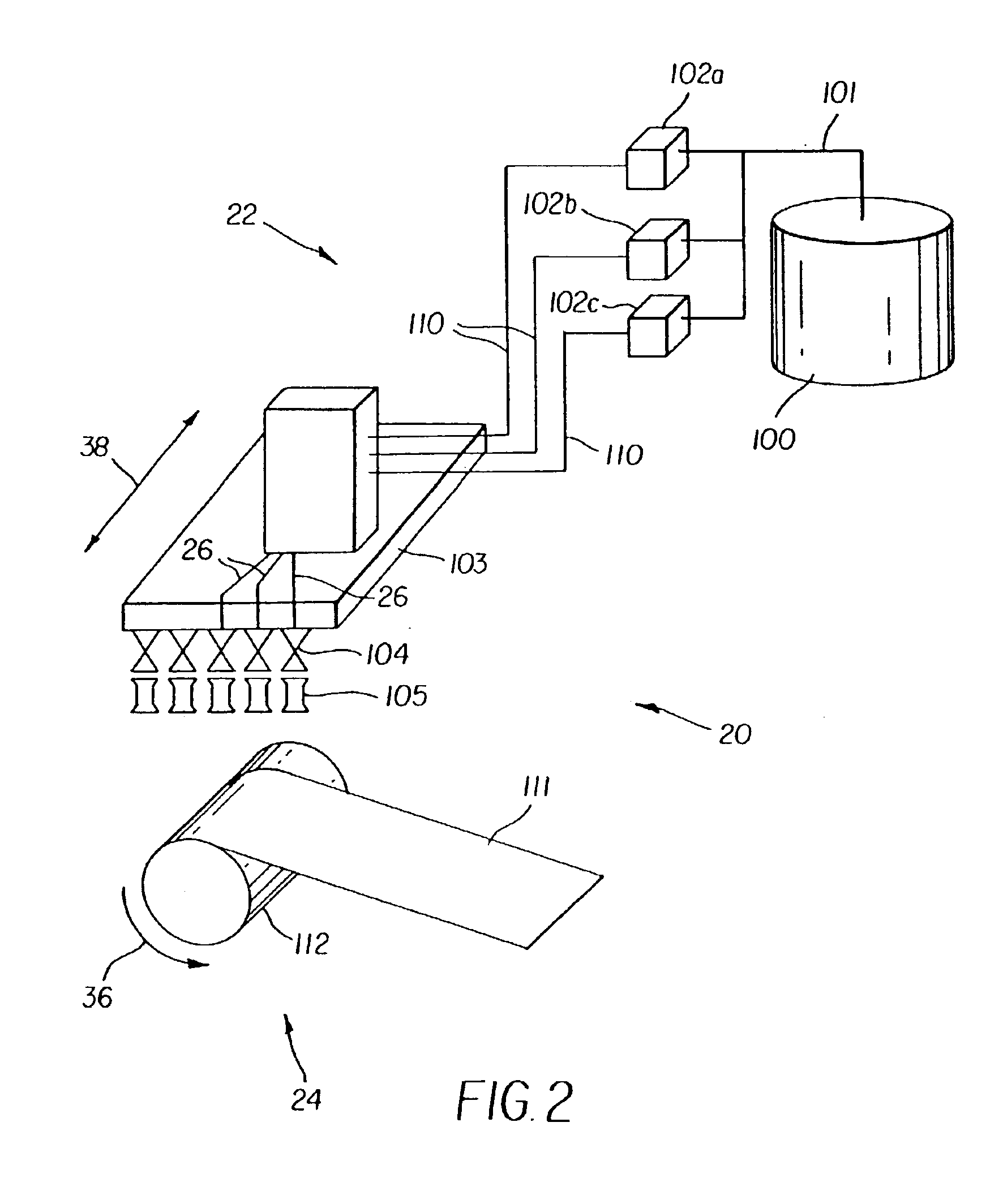Method of forming a color filter
a color filter and color technology, applied in the field of printing, can solve the problems of not being able to easily form patterned layers of thermally unstable color filter materials, not being able to solve the problems of environmental pollution, not being able to solve the problems of thermal pollution,
- Summary
- Abstract
- Description
- Claims
- Application Information
AI Technical Summary
Problems solved by technology
Method used
Image
Examples
first embodiment
Referring to FIG. 1, a first embodiment is shown. The printhead 103 which includes at least one discharge device 105 and at least one actuating mechanism 104 remains stationary during operation. However, the printhead 103 can maintain a limited movement capability as is required to dither the image (typically from one to two pixels in length). A receiver 106 positioned on a receiver retaining device 24 moves in a first direction 32 and a second direction 34. Typically, the second direction 34 is substantially perpendicular to the first direction 32. The two directional motion of receiver 106 can be achieved by using a receiver retaining device 24 having a first motorized translation stage 108 positioned over a second motorized translation stage 109.
In this embodiment, the printhead 103 can be connected to the formulation reservoir(s) 102a, 102b, 102c using essentially rigid, inflexible tubing 101. As the color filter material delivery system is typically under high pressure from the...
second embodiment
Referring to FIG. 2, a second embodiment is shown. In this embodiment the receiver retaining device 24 is a roller 112 that provides one direction of motion 36 for a receiver 11 while the printhead 103 translates in a second direction 38. Rigid tubing 101 connects the compressed fluid source 100 to the formulation reservoir(s) 102a, 102b, 102c. However, the printhead 103 is connected to the formulation reservoir(s) 102a, 102b, 102c by a flexible high pressure tube(s) 110. A suitable flexible hose can be, for example, a Titeflex extra high pressure hose P / N R157-3 (0.110 inside diameter, 4000 psi rated with a 2 in bend radius) commercially available from Kord Industrial, Wixom, Mich. The compressed fluid source 100 is remotely positioned relative to the printhead 103.
In a multiple material printing operation, each material is applied in a controlled manner through the actuating mechanisms 104 and discharge devices 105 of printhead 103 as the printhead 103 translates in second directi...
third embodiment
Referring to FIG. 3, a third embodiment is shown. In this embodiment, the color filter material delivery system 22 includes a compressed fluid source 115 positioned on the printhead 103. The compressed fluid source 115 is in fluid communication with the formulation reservoir(s) 102a, 102b, 102c through delivery path(s) 40 located on or in the printhead 103. The formulation reservoir(s) 102a, 102b, 102c are connected in fluid communication with the discharge device(s) 105 through delivery path(s) 26 positioned on or in the printhead 103.
The compressed fluid source 100 is connected to a docking station 113 which mates with a recharging port 114 of the compressed fluid source 115 located on the printhead 103. This allows the compressed fluid contained in the compressed fluid source 115 located on the printhead 103 to be replenished as is required during a printing operation. Recharging can occur in a variety of situations, for example, recharging can occur when a predetermined remainin...
PUM
 Login to View More
Login to View More Abstract
Description
Claims
Application Information
 Login to View More
Login to View More - R&D
- Intellectual Property
- Life Sciences
- Materials
- Tech Scout
- Unparalleled Data Quality
- Higher Quality Content
- 60% Fewer Hallucinations
Browse by: Latest US Patents, China's latest patents, Technical Efficacy Thesaurus, Application Domain, Technology Topic, Popular Technical Reports.
© 2025 PatSnap. All rights reserved.Legal|Privacy policy|Modern Slavery Act Transparency Statement|Sitemap|About US| Contact US: help@patsnap.com



